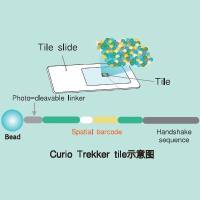The coordinated regulation of the expression of a group of genes by a specific transcription factor frequently lies at the heart of the ability of a bacterium to respond to an environmental signal, or to progress through a developmental program. Thus, in many situations, it is of interest to identify all of the genes that are under the control of a particular regulatory protein. This chapter begins with a brief overview of some of the methods that have been used in attempts to identify some or all of the members of a regulon (i.e., those genes that are the targets for a transcriptional activator or repressor). Thereafter, the chapter will focus on one technique, chromatin immunoprecipitation and microarray analysis (ChIP-chip) and some of its variants. Design considerations and some protocols for ChIP-chip experiments are provided, along with some considerations related to downstream data analysis.
ChIP-chip is a method for the genome-wide localization of protein-binding sites. In a typical ChIP-chip protocol, proteins are cross-linked nonspecifically to DNA in vivo. Chromatin is extracted and sheared, and specific protein–DNA complexes are immunoprecipitated with a suitable antibody. After purification, the DNA is hybridized to a microarray (after an amplification step in some protocols), together with a differentially labeled reference sample. Features on the microarray that show an elevated fluorescence ratio reveal DNA sequences that were enriched by immunoprecipitation. The corresponding genomic locations are those that were enriched, and are therefore close to sites of binding. The use of high-density tiled microarrays allows for binding site localization with quite high resolution. It is likely that ChIP-chip will soon be superseded by ChIP-seq, in which the immunoprecipitated DNA is analyzed directly by next-generation sequencing technologies. ChIP-chip and ChIP-seq applications are not confined to regulatory proteins, since they can be used with any protein that binds to DNA, either directly, or indirectly via an interaction with another protein. Thus, ChIP-chip has been used successfully to map binding sites for nucleoid proteins, and proteins involved in DNA replication.






